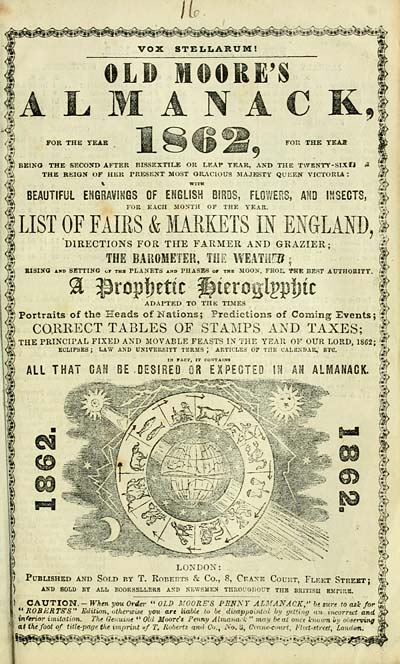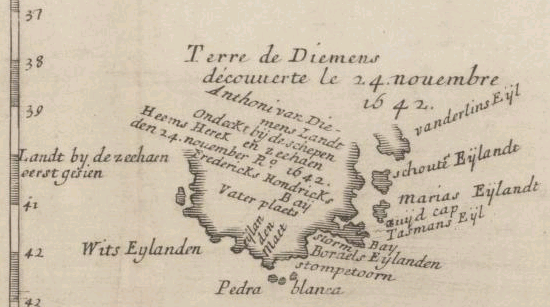|
Walch's Red Book
''Walch's Tasmanian Almanac'' was an almanac produced in Hobart by J. Walch and Sons from the 1850s until 1980. It had a range of variant titles over the time that it was published, but was commonly known as ''Walch's Almanac''. Also known as the "red book", it included detailed information about Tasmania for the current year, and all regions and towns of the state. It is a valuable resource of historical information about Tasmania. Extensive use of the information has been collated and indexed by and for genealogical societies.http://search.ancestry.com.au/search/db.aspx?dbid=30372 – Walch's Tasmanian Almanac, 1863–1904 on Ancestry dot com See also * Tasmanian year book * Australian Blue Book * Pugh's Almanac ''Pugh's Almanac'' was an annual almanac published in Queensland, Australia. It provided a guide to Queensland, and information about the events of the previous year and included several directories of commercial and non-commercial organisations. ... Notes R ... [...More Info...] [...Related Items...] OR: [Wikipedia] [Google] [Baidu] |
Almanac
An almanac (also spelled almanack and almanach) is a regularly published listing of a set of current information about one or multiple subjects. It includes information like weather forecasting, weather forecasts, farmers' sowing, planting dates, tide tables, and other table (information), tabular data often arranged according to the calendar. Celestial figures and various statistics are found in almanacs, such as the sunrise, rising and sunset, setting times of the Sun and Moon, dates of eclipses, hours of high and low tides, and religious festivals. The set of events noted in an almanac may be tailored for a specific group of readers, such as farmers, sailors, or astronomers. Name The etymology of the word is unclear. The earliest documented use of the word in something like its current sense is in Latin in 1267. Roger Bacon used it to mean a set of tables detailing movements of heavenly bodies including the Moon. It has been suggested that the word ''almanac'' derives fro ... [...More Info...] [...Related Items...] OR: [Wikipedia] [Google] [Baidu] |
Hobart, Tasmania
Hobart ( ) is the List of Australian capital cities, capital and most populous city of the island state of Tasmania, Australia. Located in Tasmania's south-east on the estuary of the River Derwent (Tasmania), River Derwent, it is the southernmost capital city in Australia. Despite containing nearly half of Tasmania's population, Hobart is the least-populated Australian state capital city, and second-smallest by population and area after Darwin, Northern Territory, Darwin if territories are taken into account. Material was copied from this source, which is available under Creative Commons Attribution 4.0 International License Its skyline is dominated by the Mount Wellington (Tasmania), kunanyi / Mount Wellington, and its harbour forms the second-deepest natural Port of Hobart, port in the world, with much of the city's waterfront consisting of reclaimed land. The metropolitan area is often referred to as Greater Hobart, to differentiate it from the City of Hobart, one of the seve ... [...More Info...] [...Related Items...] OR: [Wikipedia] [Google] [Baidu] |
The Mercury (Hobart)
''The Mercury'' is a daily newspaper, published in Hobart, Tasmania, Australia, by Davies Brothers Pty Ltd (DBL), a subsidiary of News Corp Australia, itself a subsidiary of News Corp. The weekend issues of the paper are called ''Mercury on Saturday'' and ''The Sunday Tasmanian''. The current editor of ''The'' ''Mercury'' is Craig Herbert. History The newspaper was started on 5 July 1854 by George Auber Jones and John Davies. Two months subsequently (13 September 1854) John Davies became the sole owner. It was then published twice weekly and known as the ''Hobarton Mercury''. It rapidly expanded, absorbing its rivals, and became a daily newspaper in 1858 under the lengthy title ''The Hobart Town Daily Mercury''. In 1860 the masthead was reduced to ''The Mercury'' and in 2006 it was further shortened to simply ''Mercury''. With the imminent demise of the ( Launceston) ''Daily Telegraph'', ''The Mercury'', from March 1928, used the opportunity to increase their penetration the ... [...More Info...] [...Related Items...] OR: [Wikipedia] [Google] [Baidu] |
Tasmania
Tasmania (; palawa kani: ''Lutruwita'') is an island States and territories of Australia, state of Australia. It is located to the south of the Mainland Australia, Australian mainland, and is separated from it by the Bass Strait. The state encompasses the main island of Tasmania, the List of islands by area#Islands, 26th-largest island in the world, and the List of islands of Tasmania, surrounding 1000 islands. It is Australia's smallest and least populous state, with 573,479 residents . The List of Australian capital cities, state capital and largest city is Hobart, with around 40% of the population living in the Greater Hobart area. Estimated resident population, 30 June 2017. Tasmania is the most decentralised state in Australia, with the lowest proportion of its residents living within its capital city. Tasmania's main island was first inhabited by Aboriginal Australians, Aboriginal peoples, who today generally identify as Palawa or Pakana. It is believed that Abori ... [...More Info...] [...Related Items...] OR: [Wikipedia] [Google] [Baidu] |
The Argus (Melbourne)
''The Argus'' was an Australian daily morning newspaper in Melbourne from 2 June 1846 to 19 January 1957, and was considered to be the general Australian newspaper of record for this period. Widely known as a conservative newspaper for most of its history, it adopted a left-leaning approach from 1949. ''The Argus''s main competitor was David Syme's more liberal-minded newspaper, ''The Age ''The Age'' is a daily newspaper in Melbourne, Australia, that has been published since 1854. Owned and published by Nine Entertainment, ''The Age'' primarily serves Victoria (Australia), Victoria, but copies also sell in Tasmania, the Austral ...''. History The newspaper was originally owned by William Kerr, who was also Melbourne's town clerk from 1851 to 1856 and had been a journalist at the '' Sydney Gazette'' before moving to Melbourne in 1839 to work on John Fawkner's newspaper, the ''Port Phillip Patriot''. The first edition was published on 2 June 1846. The paper soon became k ... [...More Info...] [...Related Items...] OR: [Wikipedia] [Google] [Baidu] |
Family History Society
A family history society or genealogical society is a society, often charitable or not-for-profit, that allows member genealogists and family historians to profit from shared knowledge. Large societies often own libraries, sponsor research seminars and foreign trips, and publish journals. Some societies concentrate on a specific niche, such as the family history of a particular geographical area, ethnicity, nationality, or religion. Lineage societies, also called hereditary societies, are societies that limit their membership to descendants of a particular person or group of people of historical importance. Nobility associations gather persons who belong to a country's nobility under current or historical law and can prove it. National and international societies * American Society of Genealogists * Federation of Family History Societies (FFHS) (UK) * Federation of Genealogical Societies (FGS) (US) * Genealogical and Heraldic Office of Belgium * Guild of One-Name Studies (UK) * ... [...More Info...] [...Related Items...] OR: [Wikipedia] [Google] [Baidu] |
Tasmanian Year Book
Tasmanian year book was the annual review of statistics collected for Tasmania. It was a companion volume to Walch's Tasmanian Almanac, and produced between 1967 and 2000. It was issued by the Commonwealth Bureau of Census and Statistics Tasmanian Office, later known as the Australian Bureau of Statistics office.It had regular special articles in each edition which were considered definitive in their writing and approach. Special articles No.11 (1977) *Townsley, W.A. ''The Tasmanian main line railway company'' (originally presented in 1956 to the Tasmanian Historical Research Association The Tasmanian Historical Research Association is a Hobart, Tasmania, Hobart based Tasmanian historical group and publisher in existence since 1951. Earlier groups concerned about history and historical preservation occurred in the 1890s and 1920 ...) pp. 6 – 22. along with photographs Publishing details No. 1 (1967)-no. 27 (2000) - Hobart, Tas. : Commonwealth Bureau of Census and Stati ... [...More Info...] [...Related Items...] OR: [Wikipedia] [Google] [Baidu] |
Australian Blue Book
The ''Australian Blue Book'' was an Australian almanac and national reference book published in Australia between 1942 and 1950. The 1942 (first) edition was edited by A. Moorehead, and the 1946–48 (second) edition by W. J. Beckett another part of the book was a supplement published in 1950. Beckett was involved in a court case at one point. The book was published in Sydney, and contained comprehensive photographs of people in administrative positions, as well as material from Australians involved in the second World War. It had extensive listings of all the local government areas in Australia at the time, with names of officials and descriptions of the areas. It was not related in any way to the other titles with state names, such as the ''Western Australian Blue Book'' of the 1890s. See also * Pugh's Almanac * Walch's Tasmanian Almanac ''Walch's Tasmanian Almanac'' was an almanac produced in Hobart by J. Walch and Sons from the 1850s until 1980. It had a range of v ... [...More Info...] [...Related Items...] OR: [Wikipedia] [Google] [Baidu] |
Pugh's Almanac
''Pugh's Almanac'' was an annual almanac published in Queensland, Australia. It provided a guide to Queensland, and information about the events of the previous year and included several directories of commercial and non-commercial organisations. History It was founded by Theophilus Parsons Pugh, and published from 1859 to 1927. See also * '' Australian Blue Book'' * ''Walch's Tasmanian Almanac ''Walch's Tasmanian Almanac'' was an almanac produced in Hobart by J. Walch and Sons from the 1850s until 1980. It had a range of variant titles over the time that it was published, but was commonly known as ''Walch's Almanac''. Also known as ...'' References External links Pugh's Almanac Australian almanacs History of Queensland Publications established in 1859 Publications disestablished in 1927 1859 establishments in Australia {{Queensland-stub ... [...More Info...] [...Related Items...] OR: [Wikipedia] [Google] [Baidu] |
History Of Tasmania
The history of Tasmania begins at the end of the Last Glacial Period (approximately 12,000 years ago) when it is believed that the island was joined to the Australian mainland. Little is known of the human history of the island until the British colonisation of Tasmania in the 19th century. Indigenous people Tasmania was inhabited by an Indigenous population, the Aboriginal Tasmanians, and evidence indicates their presence in the territory, later to become an island, at least 35,000 years ago. At the time of the British occupation and colonisation in 1803 the Indigenous population was estimated at between 3000 and 10,000. Historian Lyndall Ryan's analysis of population studies led her to conclude that there were about 7000 spread throughout the island's nine nations; Nicholas Clements, citing research by N.J.B. Plomley and Rhys Jones, settled on a figure of 3000 to 4000. The combination of the so-called Black War, internecine conflict and, from the late 1820s, the sprea ... [...More Info...] [...Related Items...] OR: [Wikipedia] [Google] [Baidu] |




